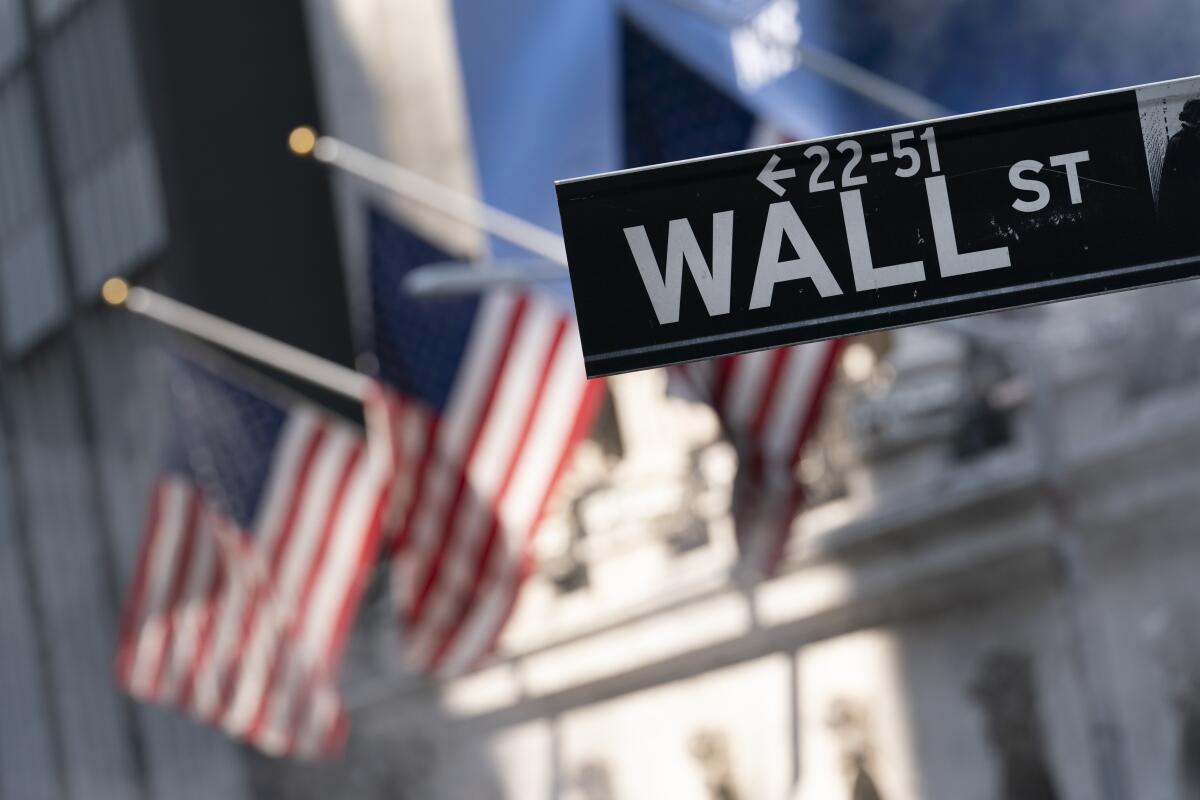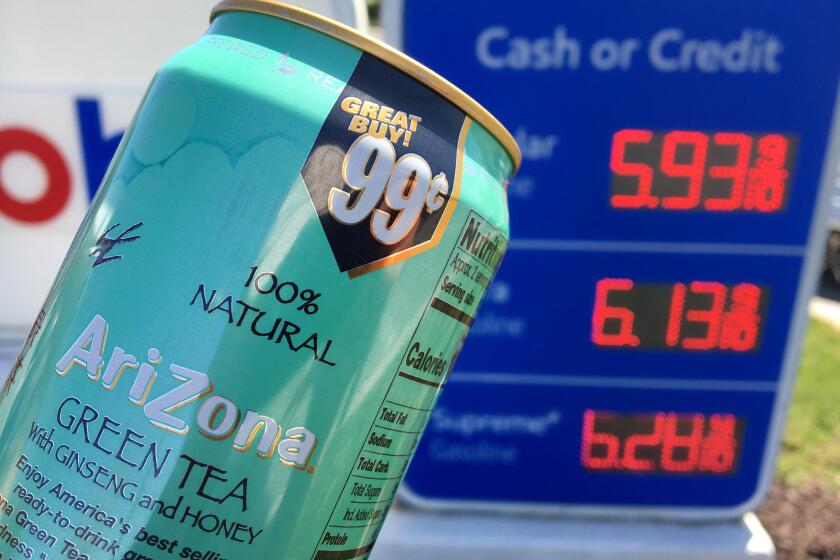Tech stocks rally after an early loss, leading market higher

Stocks overcame a weak start and finished broadly higher Tuesday, giving the major indexes on Wall Street their best day in nearly five weeks.
The Standard & Poor’s 500 rose 1.6%, enough to recoup almost all of its losses from last week. The Dow Jones industrial average rose 1.5% and the Nasdaq composite gained 2.2%.
The last time the indexes mounted a bigger rally was March 16. The S&P 500 and Nasdaq came into this week with two straight weekly losses, while the Dow has fallen three weeks in a row.
Stocks have mostly struggled this year amid uncertainty over how the economy and corporate America will be affected as the Federal Reserve moves to reverse low-interest rate policies that helped markets soar in recent years.
“We’re just getting a little bit of a bounce back from what’s been a tough couple of weeks,” said Bill Northey, senior investment director at U.S. Bank Wealth Management.
Tall cans of AriZona iced tea have cost 99 cents since 1992. The family behind the company says it’s committed to that price even as the prices of aluminum and corn syrup climb higher.
The S&P 500 rose 70.52 points to 4,462.21. The Dow recovered from a 17-point drop and climbed 499.51 points to 34,911.20. The Nasdaq gained 287.30 points to 13,619.66.
Nearly 90% of the stocks in the benchmark S&P 500 rose. Technology stocks helped power the broad gains. Pricey valuations for many of the bigger technology companies give them more sway in directing the broader market higher or lower. Microsoft rose 1.7%.
Retailers and healthcare companies also helped lift the market. Amazon rose 3.5%. Johnson & Johnson rose 3.1% after reporting surprisingly good earnings while also raising its dividend.
Banks gained ground along with rising Treasury yields, which allow them to charge higher interest rates on loans. The yield on the 10-year Treasury rose to 2.94% from 2.85% late Monday. Bank of America rose 1.9%.
Smaller company stocks outpaced the broader market in a sign of confidence about economic growth. The Russell 2000 rose 40.63 points, or 2%, to 2,030.77.
Energy stocks were the only laggard. U.S. crude oil prices fell 5.2% and natural gas prices slumped 8.2%.
Wall Street is increasingly focusing on the latest round of corporate report cards as more big companies release their earnings. Signature Bank jumped 8.1% after beating analysts’ expectations.
Dental products maker Dentsply Sirona slumped 13.4% after firing its chief executive without giving a reason, along with issuing a profit forecast for the current quarter that was far below analysts’ estimates.
Netflix sank 25% in after-hours trading after the video streaming giant reported its first loss in worldwide subscribers in more than a decade. Netflix said it was bracing for things to get even worse with a projected loss of an additional 2 million subscribers during the April-June period. As of Tuesday’s close, Netflix had already lost half its value since hitting an all-time high in November.
Netflix cited several reasons for the subscriber loss, including rising competition and password sharing. Executives said they would consider a lower-priced option with ads.
Railroad giant CSX will report earnings on Wednesday, along with Tesla. American Airlines and Union Pacific will report their results on Thursday.
The latest round of earnings comes as investors try to gauge how companies and consumers are dealing with rising inflation that has made everything from food to clothing to gas more expensive.
The conflict in Ukraine has added to those price pressures. The International Monetary Fund on Tuesday downgraded the outlook for the world economy this year and next, blaming Russia’s war in Ukraine for disrupting global commerce, pushing up oil prices, threatening food supplies and increasing uncertainty already heightened by the coronavirus and its variants.
Rising prices have prompted the Federal Reserve and other central banks to raise interest rates in order to help temper the effect of inflation. The Fed has already announced a quarter-percentage point rate hike and Wall Street expects a half-percentage rate increase at its next meeting. Currently, investors expect the rising rate to push the benchmark interest rate between 2.5% and 2.75% by the end of the year, according to CME Group’s FedWatch tool.
“It’s going to be interesting to see how fast they hike rates from one meeting to the other,” said Shawn Cruz, head trading strategist at TD Ameritrade. “How we get to the end of the year is going to be something that will have a lingering effect of driving uncertainty in the market and continuing to drive volatility.”
Bond yields have been rising as Wall Street prepares for higher interest rates. The yield on the 10-year Treasury is the highest it’s been since late in 2018. Rising yields have also been raising pressure on an already tight housing market as mortgages rates rise and make borrowing more expensive. Wall Street will get more details on that outcome when the National Assn. of Realtors releases its home sales report for March on Wednesday.
More to Read
Inside the business of entertainment
The Wide Shot brings you news, analysis and insights on everything from streaming wars to production — and what it all means for the future.
You may occasionally receive promotional content from the Los Angeles Times.












